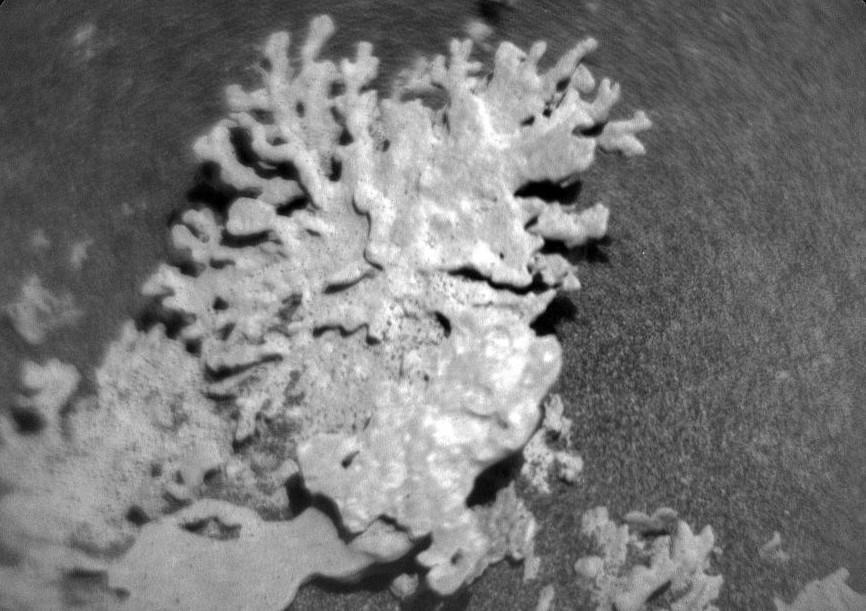
Coral-shaped rock spotted on Mars, NASA shares pic
In a remarkable discovery, NASA’s Curiosity Mars rover has sent back stunning black and white images of a rock on the Martian surface that bears a striking resemblance to a piece of coral. The rock, which was found in the Gale Crater, a large impact basin on Mars, is estimated to be around a billion years old.
The Gale Crater is a fascinating geological feature on Mars that has been a focus of scientific study for NASA’s Curiosity rover. The crater is thought to have been formed around 3.5 billion years ago as a result of a massive asteroid impact. Since its arrival on Mars in 2012, the Curiosity rover has been exploring the crater and its surroundings, uncovering new insights into the planet’s geological history.
The coral-shaped rock was spotted by the Curiosity rover’s Chemistry and Camera (ChemCam) instrument, which is designed to analyze the chemical composition of Martian rocks and soil. ChemCam uses a laser to vaporize small samples of rock and then analyzes the resulting plasma to determine the chemical makeup of the sample.
According to NASA, the coral-like rock is thought to have formed through a process known as “volcanic activity” which occurred around a billion years ago. During this time, molten rock, or magma, rose to the surface of Mars and cooled, forming a variety of different rock types.
The discovery of the coral-shaped rock is significant because it provides scientists with new insights into the geological history of Mars. The rock’s unique shape and composition suggest that it may have formed in a very different environment than the rocks surrounding it.
“This rock is a great example of the diversity of geological processes that have shaped Mars over time,” said Dr. Ashwin Vasavada, Curiosity rover project scientist at NASA’s Jet Propulsion Laboratory. “The fact that we’re seeing such a variety of different rock types on Mars is a testament to the rover’s ability to explore and sample the Martian surface.”
The coral-shaped rock is just the latest in a series of fascinating discoveries made by the Curiosity rover. In 2020, the rover discovered evidence of ancient lakes and rivers on Mars, which suggests that the planet may have once been habitable.
The Curiosity rover is a testament to NASA’s commitment to exploring our solar system and searching for answers to some of humanity’s most fundamental questions. As we continue to explore Mars and uncover its secrets, we may one day find evidence of past or present life on the Red Planet.
Source:
https://www.jpl.nasa.gov/images/pia26634-curiositys-chemcam-views-a-rock-shaped-like-coral/






